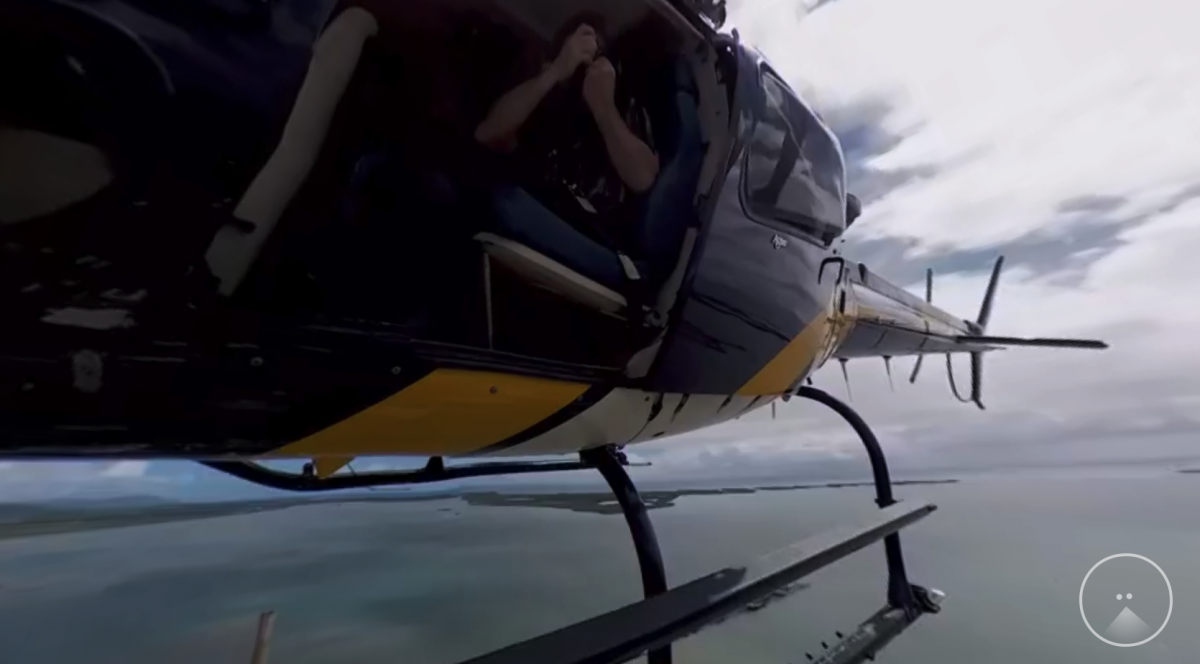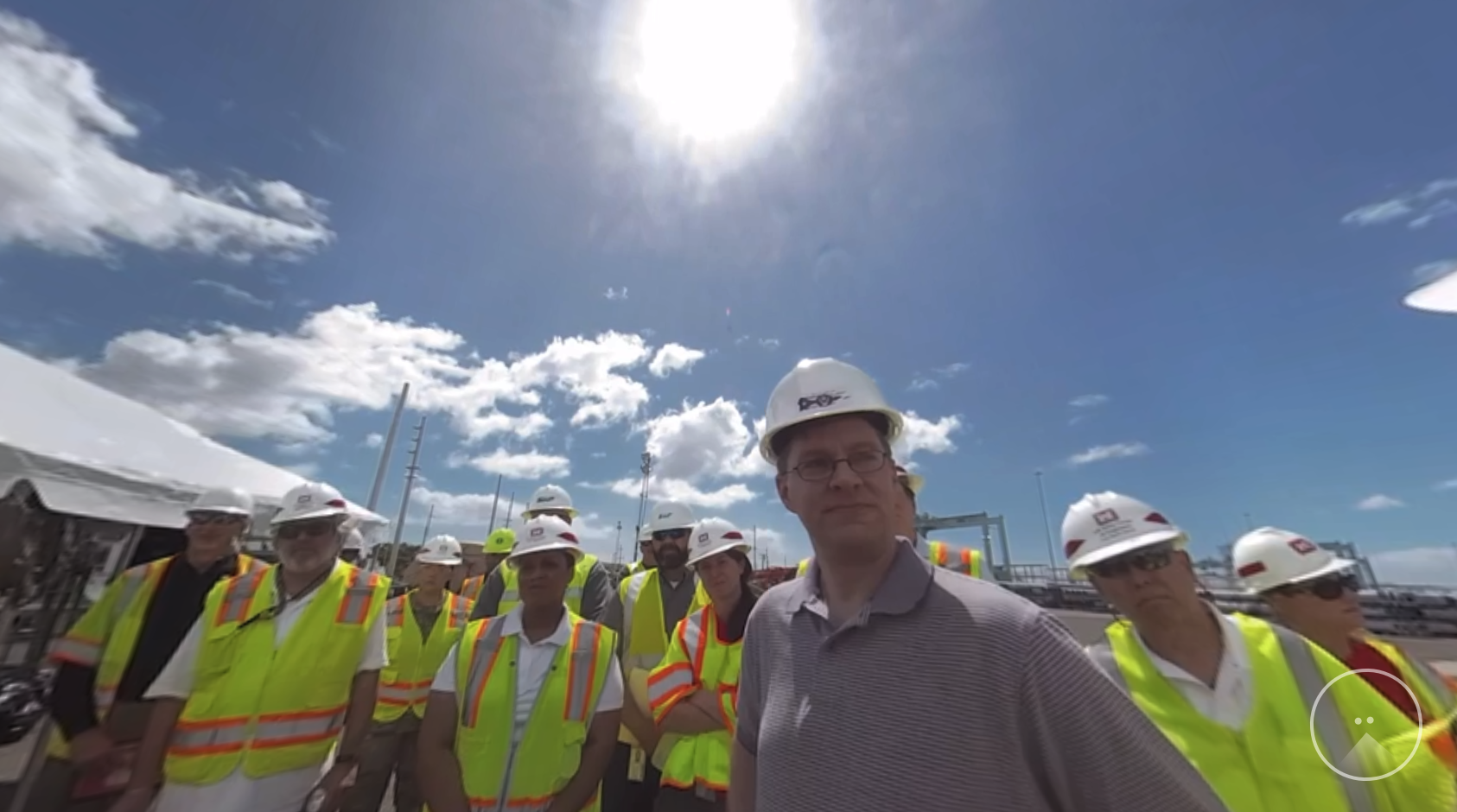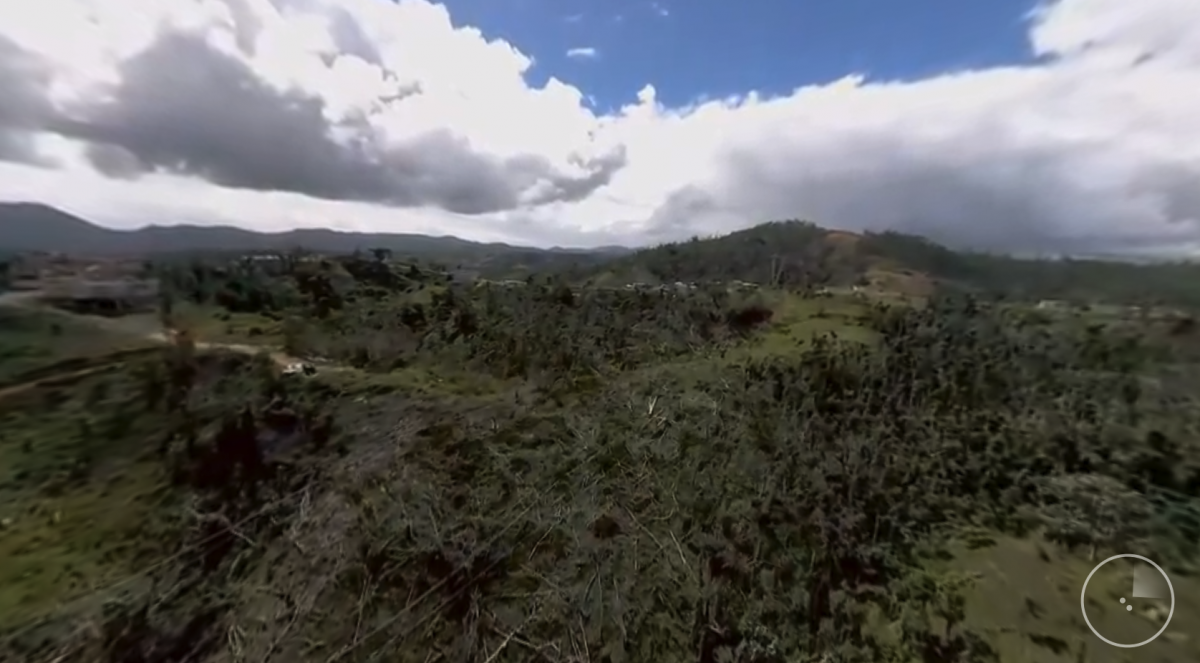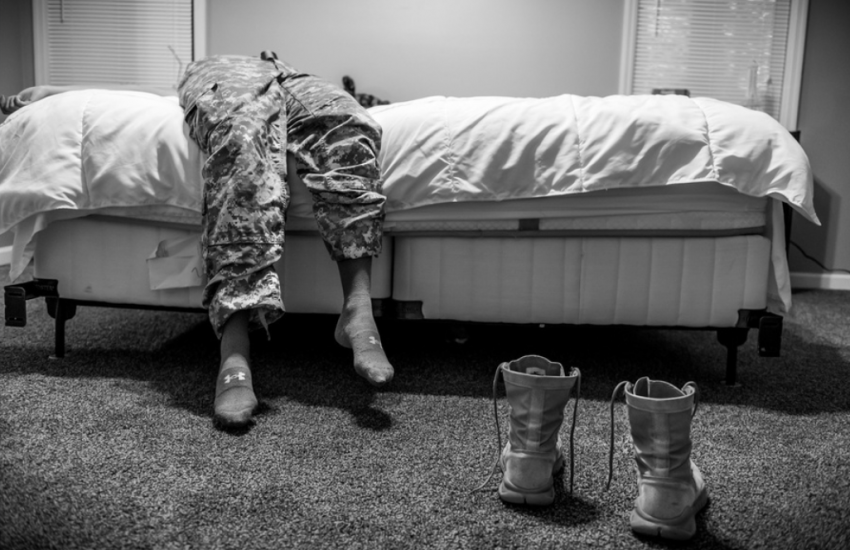How The New York Times used 360 video to show Puerto Rico’s electrical grid repair following Maria
In September 2017, Hurricane Maria devastated the island of Puerto Rico. When the hurricane finally dissipated in early October, the damage had made it the worst natural disaster to hit the island. Much of the hurricane’s impact is still being felt more than a year later.
The New York Times recently sent an investigative team to Puerto Rico to report on the electrical issues the country still faces. A video team also went along, shooting 360 video to produce the piece “Dark Island: Rebuilding Puerto Rico’s Grid” to give viewers an immersive look at how the nation is stilly trying to recover.
Veda Shastri, one of the 360 video producers behind the project, spoke with Storybench about how it was conceptualized, the benefits of using 360, and what the future of immersive storytelling holds.
Can you describe what the “Dark Island” video is? What is the goal of the project?
The ‘Dark Island’ NYTVR documentary follows and assesses the repair of the electric grid in Puerto Rico after Hurricane Maria several months afterwards. This was actually a collaboration with the investigations desk. The investigations desk, the reporter James Glanz, and Frances Robles… had been covering this and were looking at why it has been taking so long, why it took so long, what were the inherent flaws in the electric grid, what did FEMA do, what did the Army Corps of Engineers do and what was happening on the ground. They were taking a deep dive look into it, and we, the immersive team, came on about a few weeks maybe a month before one of their first trips down there… And so, our goal was to show, basically the scale of the destruction, show the terrain, which is a huge part of why it was so devastating in terms of the power grid itself. You can see the power lines; how they were built from the south to the north and stretched across that terrain. We basically had the opportunity to go up in helicopters and get an aerial view, and we embedded with the Army Corps of Engineers as they were taking assessments and looking at what was happening on the ground, and bearing witness to those repairs. Basically, we were able to capture the scale of that. We saw miles and miles of power lines still down. We were there in February, So that was several months after the hurricane had hit.

Which came first: the obligation to shoot a 360-degree video, or covering the restoration of Puerto Rico’s power grid? In other words, was the story chosen for the medium, or was the medium chosen for the story?
The Times has been covering the aftermath of Hurricane Maria very consistently from a lot of different angles. So, there are a lot of desks at The Times; the national desk has been covering it, [and] this was an effort led by the investigations desk. On a huge issue like this, in the Times newsroom, there are always multiple ways to come out of that story. This particular project was being undertaken by the investigations desk, but we as a team, the immersive team… We don’t do VR for every story. We really take a lot of time to think about which story it will work for, that we’ll be able to bring a unique angle to this story that’s not being covered already, especially visually. And so, we chose to make a long form piece on this because of the story, while the story at large was being continued to be covered by The Times.
How does the 360-degree element change the nature of the project? What does it bring to the table, and is there anything lost by pursuing this method, compared to a conventional video?
I think it most powerfully allows you to bear witness and see what people on the ground are seeing, or what people who are trying to repair this grid are seeing, or what residents are seeing. You’re really getting an unobstructed view; you’re getting a view that’s 360 degrees all around. You’re not just seeing something that’s like, one part of the scene. In a story like this, where there’s a lot of debate about, you know, a lot of finger pointing and a lot of blame, rightly so for specific reasons, but it’s really interesting for us to be able to bring that visual element for the readers and the viewers to be able to see for themselves what we’re talking about in a lot of our reporting. I mentioned earlier: scale; scale is super important in this, because it’s a very complex story.
There are photographs in this in this project taken by a phenomenal [Times] photographer, Todd Heisler… We worked very collaboratively as a team, we were all on the ground together, and his photos will bring you something different than the VR does. We think about integrating the different text, the photos and the video together in such projects. Obviously, there will be people who will come to ‘Dark Island’ separately and only view that, and for that reason the piece itself has a lot of background and a lot of context so that you understand that story, but these are all being done kind of together. We had a really good experience filming it; we didn’t have any kind of problems. I often say that with a 360 camera, you’re getting that full view, and because the person doesn’t necessarily need to be in the shot. Some of the shots, like outside from the Black Hawk helicopter and other helicopters, we are in the shot because, you know, we have to be there while filming… But otherwise, you kind of get an unobstructed view, you get a lot of organic moments because once you explain what the camera is, and you explain what’s happening to subjects on the ground, you’re able to place a camera and then let it unfold. We found that people became very comfortable with that very quickly, whereas, with regular video, it’s just a different style of filmmaking where the person is obviously going to be in the shot, trying to get those close ups and being there, and even in that kind of process, subjects take a lot of time to get used to the camera.
Can you explain how the video was shot for someone who is unfamiliar with how 360-degree video is actually captured? What is the software or hardware that was used during it?
360 video is shot with 360 cameras, which are separate cameras than traditional flat video. There’s a variety of a lot of different cameras that can be used, and we use a variety of different cameras. For this specific project, we were experimenting with this camera called the Z CAM S1. The basic set up is a camera, a 360 camera, at the top attached to a monopod, which is very similar to a tripod, but the blind spot of the camera right below it. When you use a monopod, that pole right below it doesn’t necessarily show. The monopod we use has weights and legs at the very bottom, so you’ll often see that print when you look down in our 360 videos, you’ll see the legs, but that monopod allows the camera to stand up on its own when the video journalist is leaving the scene.
You can rig a camera a lot of different ways as long as it’s stable, so we also did have in the field mounts and clamps, but we mostly use the camera on a monopod. Whether it was like sticking it out of, you know, a helicopter, or having it on the ground, or being inside someone’s house. Most of the time, that was the setup. We also recorded audio interviews and external sound on a small Zoom. We edit on Adobe Premiere, but for the stitching, we use a variety of different stitching softwares. For those who don’t know, in order to edit with 360 video footage, you need to first stitch together the footage from each of the lenses or each of the cameras in whatever setup you’re using so that you have a 360 shot to edit with.
We stitch that together using either Autopano or Mistika. Different cameras for people who are using like a Samsung or a GoPro, they have their own stitching software which can be used as well… But that’s all we used in this case, and yeah, then we just use Premiere.
Have you been involved in the production of any 360 videos in the past, or any type of immersive media that goes beyond the conventional standards of what people usually put out?
“It’s a very rapidly accelerating kind of space.”
Yeah. So I’ve been producing 360 video for about two and a half years now. I joined The Times to work on the daily 360 project, where we produced over 400 videos in about 14 months. I personally produced over 100 of those videos. A lot of those were short videos; around one to two minutes long, sometimes shorter, sometimes longer, depending on the story. That’s my experience at The Times, and before coming to The Times I worked on a VR documentary for PBS Frontline. It’s called “Return To Chernobyl,” and it’s one of the somewhat earlier VR documentaries that came out in 2016. It’s funny how like, even in two and a half years how much has happened. It’s a very rapidly accelerating kind of space.
Do you have any ideas about what the future of immersive journalism might look like? What do you think the next steps are after and beyond 360 video, or where would you like to see it go?
I think making 360 video is just a start. I think we’re all hoping to move towards something that’s even more immersive and more interactive with 360 video right now. You can look all around, but as you walk, the viewpoint and the perspective doesn’t change. People are starting to work on these kinds of experiences, and that’s something I’d like to do as well, where it’s just much more immersive. The parallax changes, and you can also interact, decide for yourself which way to move or which way to interact, which [gives] the viewer more agency over what angle of the story you want to explore. It’s something that a lot of people are working on and that’s where the space is going.
Do you have any advice for individuals looking to get involved with 360 video?
The good news is that the production for 360 video has become a lot easier and a lot more cost effective. It’s a lot more accessible. The lower end of the cameras, which are which are pretty decent, which we also use in breaking news situations, are now like a hundred dollars. So, between $100 and $600, you have a variety of different cameras. I would strongly suggest getting your hands on one of them, either renting them or if your school has one of them, trying them out.
A lot of these cameras have their own stitching software, so you can either stitch it on a laptop or you can stitch it in the smartphone app that comes with all these cameras. You basically have the ability to produce 360 video within your existing format of what you already have… And even if you don’t have your own 360 player, you can embed it within YouTube or Facebook and embed those within your articles or your projects and stuff like that. There are a lot of 360 shooting guides available, so looking at those shooting guides, looking at what people are doing, and trying it out is something that I highly recommend, and I think it’s become much more accessible than it was a few years ago.
If you could put together another 360 video, where would you go, and what would it be about?
That’s a tough one. I’ve been thinking about that. I mean, there have been projects like this, but like I’ve wanted to work on an underwater project with specialized cameras. That would be something that would be really interesting. There are a lot of issues, whether it’s coral reefs and climate change, or pollution and what’s happening underwater and how that’s affecting marine life. Those are some of the issues that I’d be interested in. 360 video is really good for access to spaces that we don’t get access to at all, and sometimes covering spaces in prisons or camps where refugees might be staying or being held, or something like that, that we don’t have access to at large. Being able to bear witness to that and hear those voices and see what’s happening on the ground is something as well that is worthy of being covered.






